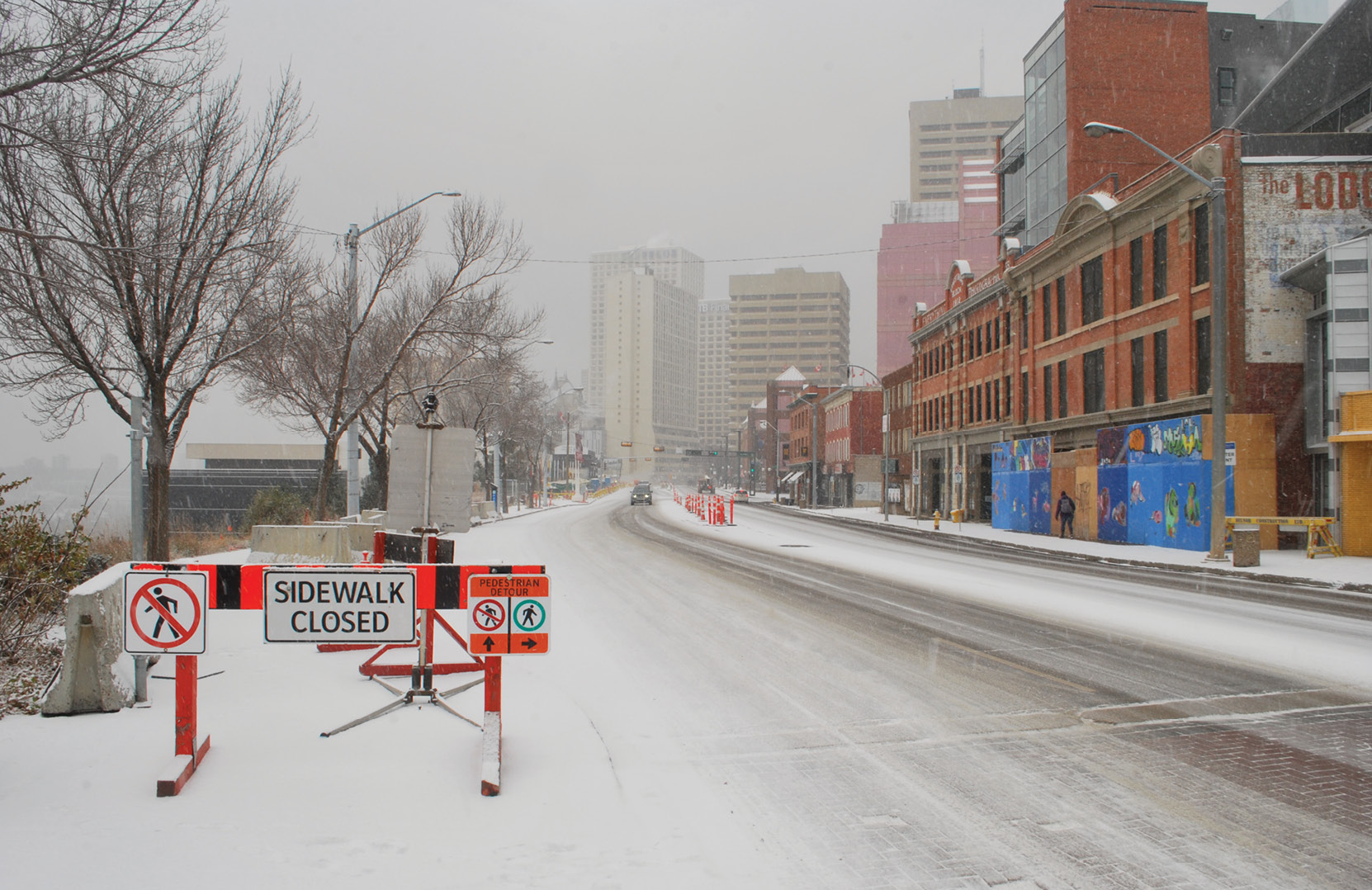The car has always won on Jasper Avenue.
Especially since its historic victory in 1951 when the streetcar system was dismantled, the car has enjoyed seven lanes (for most of its length) worth of right of way, limited pedestrian crossings, and a 60 km/h speed limit. This of course makes being a pedestrian on Jasper Ave quite the pain. Indulging all the traffic means long crossings over constantly busy streets and relatively frequent pedestrian-car collisions (the most fatal type of motor vehicle collision as a matter of percentage in 2019, by the way, according to City of Edmonton data). More than that, Jasper Avenue just feels bad to walk down. Since so much of downtown generally is planned around car traffic, every store or restaurant you’d want to go to is spread out between parkade entrances, strip malls, gas stations, and everything else cars need. Then there are the narrow sidewalks. At 2.75 metres in the worst spots, they are narrower even than the City’s own guidelines, which state a minimum of 3 metres to support pedestrian demands. In a pandemic these sidewalks are best avoided entirely, but even in normal circumstances they are more annoying to navigate than anything.
The municipal government is apparently aware of these issues — as you may have noticed, portions of the Avenue are currently undergoing renovations, part of a series to redesign most of the street with the stated goal of “providing a safe and enhanced experience for those who walk, bike, drive, or use transit.” The renovations include wider sidewalks, the removal of on-street parking in some spots, more seating, shelters at bus stops, and planters and trees that also act as a buffer between cars and people. While the renovations are currently covering just a small section, the plan is to eventually renovate the entire avenue.
Undoubtedly, these are improvements for pedestrians. Wider sidewalks mean a huge increase in accessibility, an especially important improvement for those with mobility issues who at present often have to ask others to move out of the way 5 or 6 times just to make it down a block. The removal of some on-street parking possibly means less traffic, since an incredibly surprising amount of downtown congestion in all cities consists of people circling the block looking for spots. Everything else sounds like it will just make the pedestrian environment a little nicer.
What they do not do is actually restrict cars. The thrust of the renovations involve dressing up the sidewalks, leaving the roads mostly alone. The added width doesn’t come at the expense of traffic lanes. Instead, each one will be narrowed slightly. For the most part, traffic going through Jasper Avenue is going to be more or less untouched, which means a lot of the problems — the collisions, the congestion, and most crucially, the car-first development that spreads everything out — are going untouched as well. Because everything else is still centred on drivers, even the removal of some of the street parking, the one measure that has the potential to reduce car traffic, is not likely to do so. In this case, there will be just as many people looking for parking spots, but less of them.
Regarding public transit, the renovations are moving things backwards. CBC reports that bus stops would be “cut down to every third block to ease congestion.” That’s right: as part of the effort to make Jasper Avenue more accessible, transit users are now going to need to walk further to get wherever they need to go.
If the City really wanted Jasper Avenue to be the lively retail and restaurant district it’s advertised as, it would reduce car access much more dramatically. This is the only way people would be able to move around the space with a reasonable amount of freedom and safety, and get development to reliably adjust to the idea of people walking around. Until then, it will always just be a big road.





Excellent article on This issue. I have republished it on a Facebook group.
https://www.facebook.com/groups/617821772152493/permalink/762475014353834/